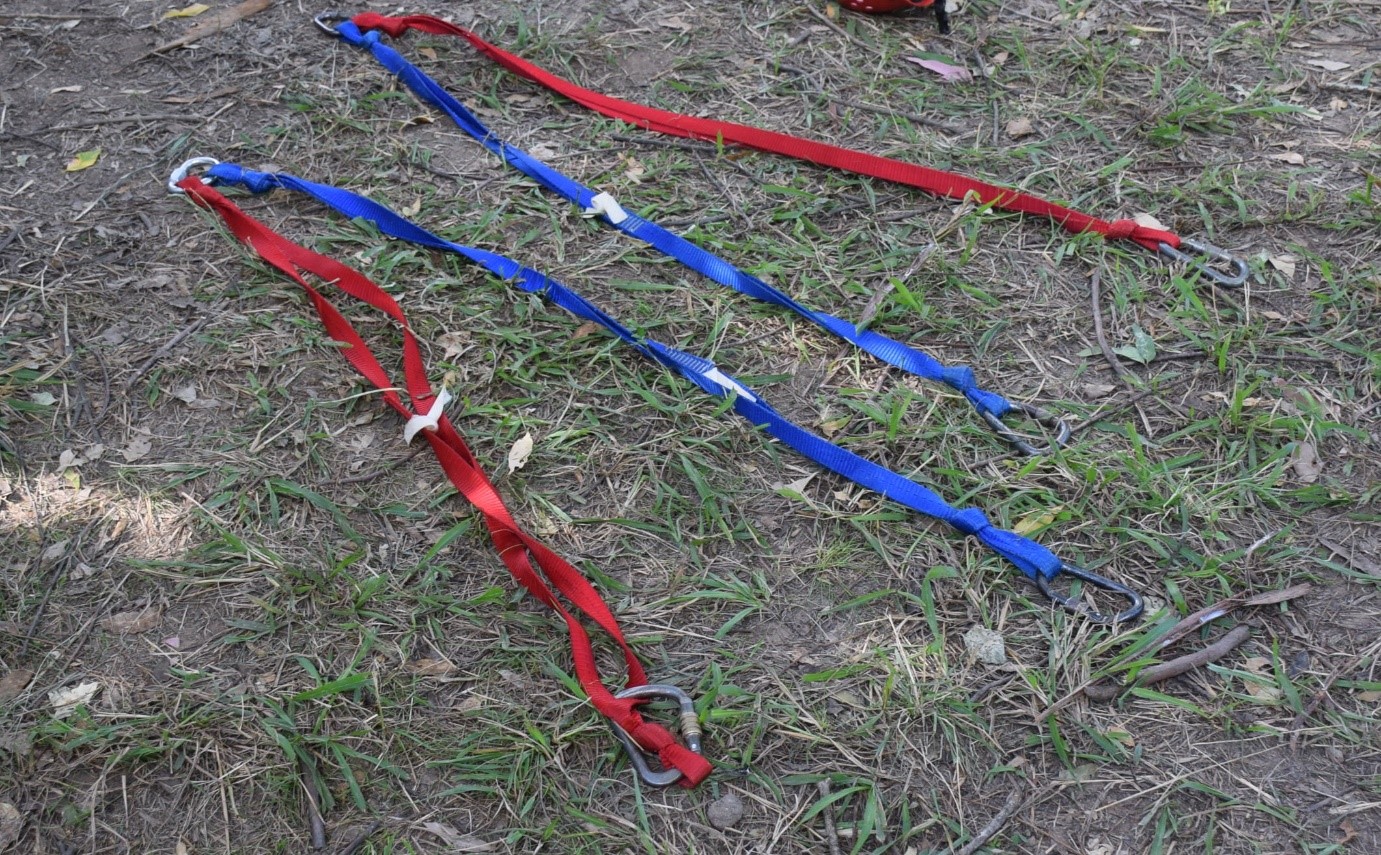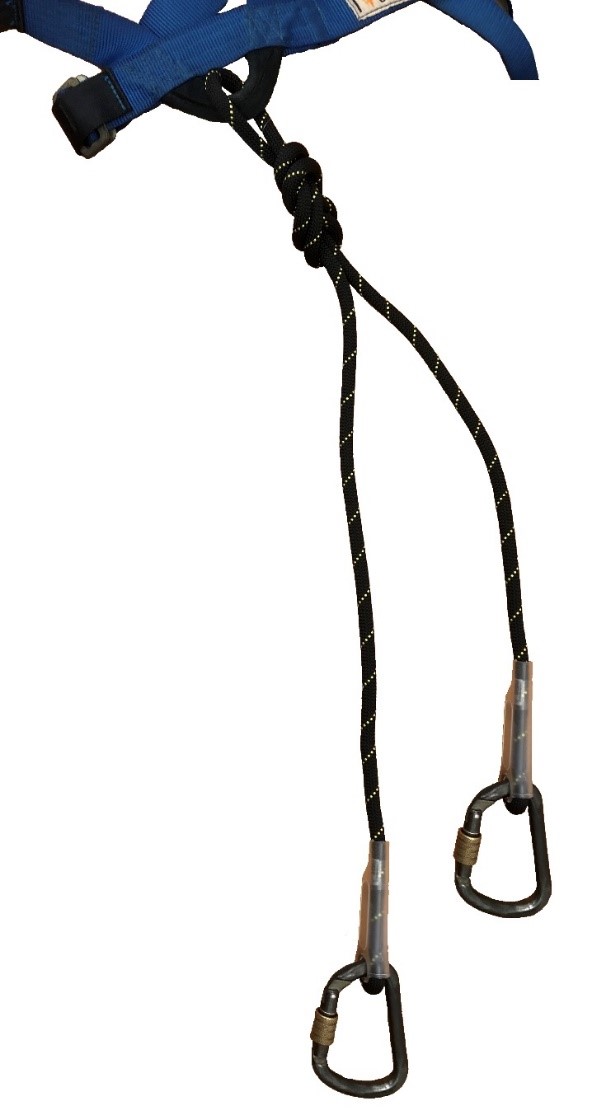High ropes adventure courses
Issued: 03/09/2018
Last Updated: 03/09/2018
Purpose
The purpose of this alert is to highlight the risk of strangulation when participating in high ropes adventure courses.
In May 2018, a participant on a high ropes adventure course was strangled in a non-fatal incident when two lanyards (cows-tails) attached to a sit harness and overhead line became taut on either side of the participant's neck.
In 2015, a similar non-fatal incident occurred at another Queensland high ropes course.
Background
A participant and instructor supervising were moving through elements of a high ropes adventure course. The participant was wearing a sit harness with a maillon (screwed metal link) on the front of that harness. Attached to that maillon were two lanyards of the same length. These secured the participant to the safety line above the obstacle through two independent karabiners (screwed hinged metal link). These two points of contact were maintained throughout each section of the course.
The use of adventure ropes courses with high and low elements provides opportunities to experience personal or team based challenges and includes inherent risk. To participate in a high ropes course requires the use of specific equipment, along with processes that require direct supervision from qualified instructors and additional support from 'spotters' (Note: spotters must be appropriately briefed adults). The use of direct supervision and spotters allows for immediate action to be taken should a participant require assistance or rescue while navigating a course.
 Figure 1: Example of two sets of lanyards similar to those in use at the time of the incident. |
Contributing factors
On this occasion, the use of twin lanyards of equal length (refer to Figure 1) contributed to the strangulation of a participant on a high ropes course. The participant fell from the element and their head slipped forwards between the two lanyards. The participant was unable to free himself and his weight caused the two lanyards to become taut on either side of his neck, applying pressure and causing strangulation.
The supervising instructor became aware that the participant was unable to pull himself back onto the course and performed a rescue using a belay system.
 Figure 2: Twin tail lanyards constructed from a single strand of material with different length legs. |
Action required
- Review lanyard arrangement to minimise risk of strangulation or other hazards including the following:
- The lanyards and connecting hardware has adequate load ratings for persons using the equipment.
- There is sufficient gap between the two lanyards when loaded to ensure entrapment and pressure on the neck or head between the lanyards does not occur. Devices that physically keep the two lanyards apart can be used to ensure this.
- Each leg of the twin lanyard arrangement is constructed from a single rope or piece of webbing so that there are no loops in which the user can be caught. The lanyards shown in Figure 1 are constructed from a webbing loop that increases the risk of entrapment.
- Ensure all components used to construct the lanyard arrangement are used in accordance with the component manufacturer's instructions. The lanyards shown in Figure 1 are constructed from knotted webbing. The webbing manufacturer's instructions state 'Do not tie knots in sling webbing'. Knots are likely to reduce the strength of the webbing and increase the risk of failure (Note: some manufacturers of tubular webbing allow knots).
- Consider using lanyards of different lengths and ensure the length of the loose lanyard is not excessive to create an additional hazard (refer to Figure 2).
- Review supervision ratio to ensure participants are adequately monitored while they are on the rope course.
- Ensure an adequate rescue kit is readily available that is suitable for unassisted abseil, and/or haul and lower rescue techniques.
- Review and practice emergency procedures to ensure that supervisors are adequately trained to reach, assist and recover participants in a timely manner.
Further information
Further information can be obtained from the following:
- Queensland Adventure Activity Standards Challenge Ropes Course
- AS2316.2.1: Artificial climbing structures and challenge courses, Flying foxes and challenge ropes courses – Construction and safety requirements
- AS2316.2.2: Artificial climbing structures and challenge courses, Flying foxes and challenge ropes courses – Operation requirements
- AS3533 series, Amusement rides and devices